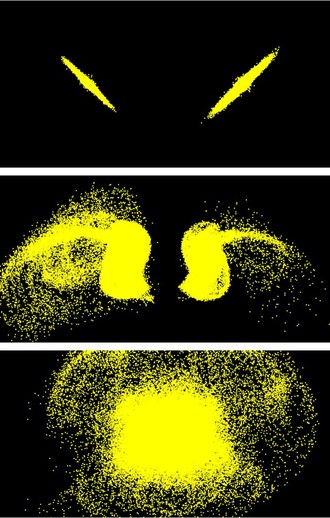
Andromeda II is one of the brightest dwarf galaxies in the vicinity of the Andromeda galaxy and shows an unusual property among objects of the Local Group: its stars rotate around the long axis of the galaxy image. Using N-body simulations Ewa Łokas and collaborators proposed an evolutionary model for the galaxy that explains this property. In this scenario, Andromeda II formed as a result of a head-on merger between two disky dwarf galaxies that took place a few billion years ago. The two progenitor galaxies had identical properties except for the size and orientation of their disks which were inclined by 45 degrees to the orbital plane and by 90 degrees with respect to each other. The rotation observed today occurs as a result of the conservation of the angular momentum components of the disks along the direction of the merger. The model also reproduces the elliptical shape of the dwarf galaxy and the different distributions of its stellar populations. Interestingly, an alternative scenario, where the galaxy forms as a result of tidal interaction with Andromeda is unable to reproduce the required properties. The results were obtained as part of the project “Dynamics and morphology of interacting galaxies” funded by the National Science Centre within the Maestro program. The article describing these findings has just been accepted for publication as a Letter in Monthly Notices of the Royal Astronomical Society.
The figure shows the stellar component of the simulated dwarf galaxy in three stages of the evolution, from top: before the merger, after the first encounter and at the end, after 10 billion years. (Copyright: Ewa L. Łokas)






